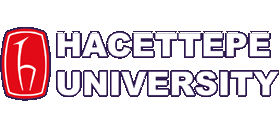| Obligation |
: |
Elective |
| Prerequisite courses |
: |
- |
| Concurrent courses |
: |
ELE425 |
| Delivery modes |
: |
Face-to-Face |
| Learning and teaching strategies |
: |
Question and Answer, Observation, Preparing and/or Presenting Reports, Experiment, Other: This course must be taken together with ELE425 TELECOMMUNICATION THEORY II. |
| Course objective |
: |
Successful students are expected to know application of analog to digital and digital to analog conversion (ADC/DAC), digital communication methods in hardware and simulation environments. |
| Learning outcomes |
: |
A student who completes the course successfully will understand fundamentals of ADC/DAC and digital communication techniques. compare relative (dis)advantages of different modulation techniques. model digital communication systems in hardware and software. recognize communication channel types, along with their drawbacks and use appropriate techniques to overcome possible problems. learn how to use measurement devices that are used in communication system test/measurement/calibration/configuration. |
| Course content |
: |
Sampling and reconstruction, Pulse amplitude modulation, Time division multiplexing, Pulse time modulation, Pulse code modulation, Differential pulse code modulation, delta modulation, Baseband data transmission methods, Eye diagrams, Digital modulation techniques: ASK, PSK and FSK. |
| References |
: |
Laboratory Manual; Şafak, M., Digital Communications, Lecture notes, 2012; Haykin, S., Communication Systems (4th ed.), Wiley, 2001; Sklar, B., Digital Communications (2nd ed.), Prentice Hall, 2001 |
Course Outline Weekly
| Weeks |
Topics |
| 1 |
Sampling and reconstruction |
| 2 |
Pulse amplitude modulation |
| 3 |
Homework 1 |
| 4 |
Time division multiplexing |
| 5 |
Pulse time modulation: pulse width modulation, pulse position modulation |
| 6 |
Homework 2 |
| 7 |
Pulse code modulation |
| 8 |
Differential pulse code modulation, delta modulation |
| 9 |
Homework 3 |
| 10 |
Baseband data transmission methods |
| 11 |
Eye diagrams |
| 12 |
Homework 4 |
| 13 |
Amplitude shift keying, frequency shift keying |
| 14 |
Phase shift keying |
| 15 |
Preparation for Final exam |
| 16 |
Final exam |
Matrix Of The Course Learning Outcomes Versus Program Outcomes
| Key learning outcomes |
Contribution level |
| 1 |
2 |
3 |
4 |
5 |
| 1. |
Possesses the theoretical and practical knowledge required in Electrical and Electronics Engineering discipline. | | | | | |
| 2. |
Utilizes his/her theoretical and practical knowledge in the fields of mathematics, science and electrical and electronics engineering towards finding engineering solutions. | | | | | |
| 3. |
Determines and defines a problem in electrical and electronics engineering, then models and solves it by applying the appropriate analytical or numerical methods. | | | | | |
| 4. |
Designs a system under realistic constraints using modern methods and tools. | | | | | |
| 5. |
Designs and performs an experiment, analyzes and interprets the results. | | | | | |
| 6. |
Possesses the necessary qualifications to carry out interdisciplinary work either individually or as a team member. | | | | | |
| 7. |
Accesses information, performs literature search, uses databases and other knowledge sources, follows developments in science and technology. | | | | | |
| 8. |
Performs project planning and time management, plans his/her career development. | | | | | |
| 9. |
Possesses an advanced level of expertise in computer hardware and software, is proficient in using information and communication technologies. | | | | | |
| 10. |
Is competent in oral or written communication; has advanced command of English. | | | | | |
| 11. |
Has an awareness of his/her professional, ethical and social responsibilities. | | | | | |
| 12. |
Has an awareness of the universal impacts and social consequences of engineering solutions and applications; is well-informed about modern-day problems. | | | | | |
| 13. |
Is innovative and inquisitive; has a high level of professional self-esteem. | | | | | |
